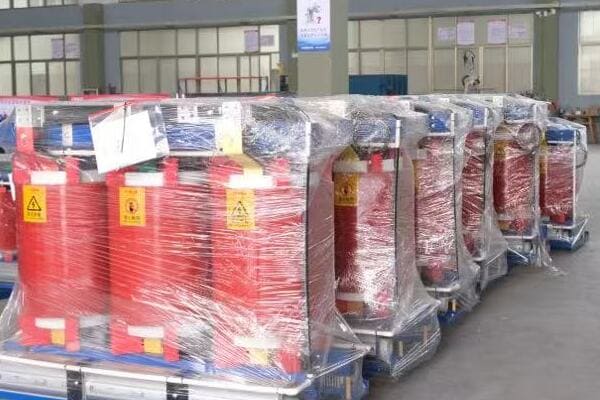2025 Middle East & Africa Transformer Market: Growth Drivers, Barriers & Key Players?
Are you struggling to navigate the complex landscape of the Middle East and Africa transformer market? You’re not alone. Many manufacturers and exporters find themselves overwhelmed by the region’s diverse regulatory environments, rapidly changing energy needs, and fierce competition. But what if you had a comprehensive guide to help you understand the market dynamics and position your business for success in 2025?
The Middle East & Africa distribution transformer market in 2025 is driven by renewable integration, urban expansion, and grid modernization. However, infrastructure gaps, regulatory fragmentation, and import dependency remain key barriers. This outlook explores regional demand, supplier opportunities, and challenges for exporters entering these emerging power markets. Understanding these factors is crucial for manufacturers and exporters looking to capitalize on the region’s growing energy needs.

In this comprehensive guide, I’ll walk you through the growth drivers, procurement trends, export challenges, and competitive landscape of the Middle East and Africa transformer market in 2025. Whether you’re a seasoned player in the region or looking to enter these emerging markets, this article will provide valuable insights to help you make informed strategic decisions.
Market Drivers in MENA and Sub-Saharan Africa?
Are you wondering what’s fueling the demand for transformers in the Middle East and Africa? Understanding these drivers is crucial for anyone looking to tap into this growing market. But what specific factors are shaping the need for transformer technology across these diverse regions?
Key market drivers include rapid urban electrification, especially in Sub-Saharan Africa, a growing pipeline of renewable energy projects across MENA, and ambitious grid upgrade initiatives like Saudi Vision 2030. The push for smart grid technologies, increasing industrial development, and the need to replace aging infrastructure are also significant factors. These drivers are creating substantial opportunities for transformer manufacturers and suppliers in the region.
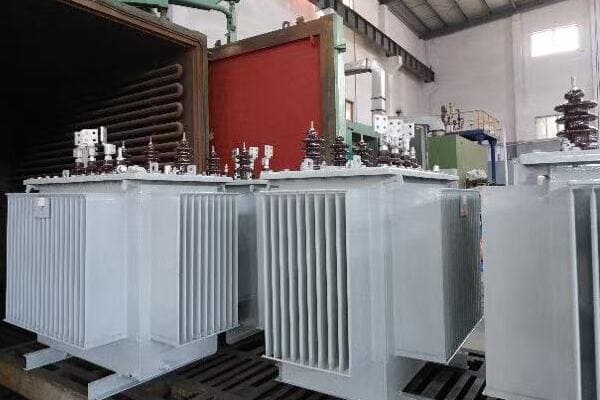
Exploring Key Market Drivers
Let’s break down the main factors driving the transformer market:
- Urban Electrification
- Renewable Energy Integration
- Grid Modernization Initiatives
- Industrial Development
- Infrastructure Replacement
Urban Electrification
A major driver, especially in Sub-Saharan Africa:
- Rapid urbanization creating new demand centers
- Government initiatives to increase electricity access
- Need for last-mile distribution infrastructure
I recently worked on a project in Nigeria where the demand for compact distribution transformers has skyrocketed due to urban expansion in Lagos and Abuja.
Renewable Energy Integration
Growing focus on clean energy across MENA:
- Large-scale solar and wind projects requiring new transformers
- Need for specialized transformers for renewable integration
- Increasing demand for smart transformers with grid stabilization features
During a recent consultation for a solar farm in Morocco, I observed firsthand the critical role of advanced transformers in managing variable renewable inputs to the grid.
Grid Modernization Initiatives
Major upgrades planned across the region:
- Saudi Vision 2030 driving significant grid investments
- UAE’s smart grid initiatives creating demand for advanced transformers
- Sub-Saharan countries upgrading aging infrastructure
Here’s a quick overview of some key initiatives:
| Country | Initiative | Impact on Transformer Demand |
|---|---|---|
| Saudi Arabia | Vision 2030 | High demand for smart transformers |
| UAE | Dubai Clean Energy Strategy | Need for renewable-ready units |
| Kenya | Last Mile Connectivity Project | Surge in distribution transformer needs |
Industrial Development
Growing industrial sectors driving demand:
- New manufacturing facilities requiring power infrastructure
- Mining and oil & gas sectors needing specialized transformers
- Data centers and tech hubs emerging across MENA
Infrastructure Replacement
Aging infrastructure creating replacement demand:
- Many countries replacing outdated transformer fleets
- Shift towards more efficient and environmentally friendly units
- Opportunity for upgrades to smart grid-compatible transformers
Key points about market drivers:
- Urban electrification is a major factor, especially in Africa
- Renewable energy projects are driving demand for specialized transformers
- Grid modernization initiatives are creating opportunities across the region
- Industrial development is fueling demand for various transformer types
- Infrastructure replacement offers chances for technology upgrades
In my experience, these drivers are not isolated but often interconnected. For instance, I recently advised on a project in Egypt where urban expansion, renewable integration, and grid modernization all converged, creating a complex but opportunity-rich environment for transformer suppliers.
For example, in a recent tender for the expansion of Cairo’s electrical grid, we saw requirements that reflected multiple drivers: high-efficiency units for urban distribution, smart features for grid management, and compatibility with nearby solar installations. This multifaceted demand is becoming increasingly common across the region.
As we move on to discuss key procurement trends, keep these drivers in mind. They significantly influence not just the volume of demand but also the specific types and features of transformers being sought in different parts of the Middle East and Africa.
Key Procurement Trends in 2025?
Are you trying to anticipate how transformer procurement in the Middle East and Africa will evolve by 2025? Staying ahead of these trends is crucial for manufacturers and suppliers looking to position themselves in this dynamic market. But what specific changes can we expect in how transformers are sourced and purchased across the region?
Key procurement trends for 2025 include a strong preference for 11kV and 33kV systems, particularly in rapidly expanding urban areas. There’s an increasing demand for dry-type transformers in commercial and industrial sectors, driven by safety and environmental concerns. Tender-based procurement is becoming more prevalent, especially in countries like Kenya and Nigeria, emphasizing competitive pricing and local content requirements. Smart and eco-friendly transformer solutions are also gaining traction across the region.
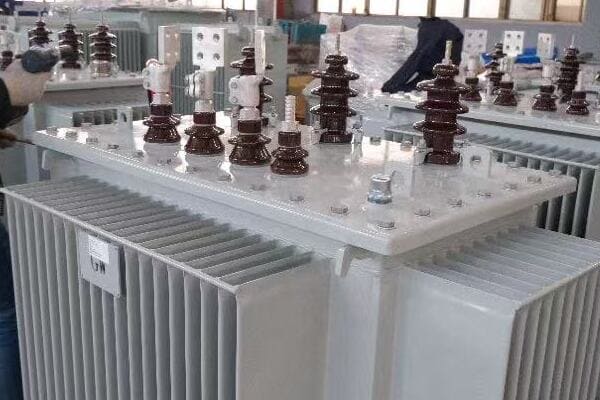
Analyzing Procurement Trends
Let’s explore the main trends shaping transformer procurement:
- Voltage Preferences
- Dry-Type Transformer Demand
- Tender-Based Procurement
- Smart and Eco-Friendly Solutions
- Local Content and Partnership Requirements
Voltage Preferences
Growing focus on specific voltage levels:
- 11kV systems dominant in urban distribution networks
- 33kV gaining popularity for medium-voltage applications
- Increased demand for compact substations in these voltage ranges
I recently consulted on a project in Dubai where the entire distribution network upgrade focused on standardizing to 11kV, highlighting this trend.
Dry-Type Transformer Demand
Rising popularity in certain sectors:
- Commercial buildings preferring dry-type for safety
- Industrial facilities choosing dry-type for reduced maintenance
- Data centers and healthcare facilities driving demand
During a recent bid for a new tech park in Nairobi, I noticed that over 80% of the transformer specifications were for dry-type units, a significant shift from previous years.
Tender-Based Procurement
Increasing use of competitive bidding:
- Major utilities in Kenya and Nigeria adopting tender processes
- Focus on transparency and cost-effectiveness
- Growing importance of lifecycle cost in evaluations
Here’s a quick look at tender trends:
| Country | Tender Focus | Key Evaluation Criteria |
|---|---|---|
| Kenya | Rural electrification | Price, reliability, after-sales |
| Nigeria | Urban grid expansion | Local content, efficiency, price |
| UAE | Smart grid integration | Technology, compatibility, TCO |
Smart and Eco-Friendly Solutions
Growing demand for advanced features:
- Smart transformers for grid management and monitoring
- Eco-friendly designs with biodegradable fluids
- Energy-efficient units to meet stricter regulations
Local Content and Partnership Requirements
Increasing emphasis on local involvement:
- Many countries requiring local manufacturing or assembly
- Partnerships with local firms becoming crucial for market entry
- Training and knowledge transfer often part of contract requirements
Key points about procurement trends:
- Specific voltage preferences are shaping product demand
- Dry-type transformers are gaining market share in key sectors
- Tender-based procurement is becoming the norm in many countries
- Smart and eco-friendly solutions are increasingly sought after
- Local content and partnerships are often critical for winning bids
In my experience, these trends are reshaping how companies approach the MEA market. I recall a recent project in Saudi Arabia where the client’s procurement strategy shifted dramatically to prioritize smart features and local partnerships, catching some traditional suppliers off guard.
For instance, in a large-scale grid modernization project in Egypt, the tender requirements reflected all these trends: a preference for 33kV systems, mandatory smart monitoring capabilities, strict efficiency standards, and a significant local content quota. Suppliers who had anticipated these trends and prepared accordingly had a clear advantage in the bidding process.
As we move on to discuss export barriers and regulatory risks, keep these procurement trends in mind. They not only influence what products are in demand but also how companies need to position themselves to compete effectively in the Middle East and Africa transformer market.
Export Barriers and Regulatory Risks?
Are you concerned about the challenges of exporting transformers to the Middle East and Africa? Navigating the complex landscape of regulations and trade barriers can be daunting for many manufacturers. But what specific obstacles should you be prepared for when entering these markets, and how can you mitigate the associated risks?
Key export barriers include certification mismatches between international standards (like IEC) and local grid codes, complex import tariffs and bureaucratic processes, and logistical challenges in many African countries. Regulatory risks involve frequent changes in local content requirements, environmental regulations, and tender processes. Additionally, after-sales service limitations and currency fluctuations pose significant challenges. Understanding and preparing for these barriers is crucial for successful market entry and long-term presence in the region.
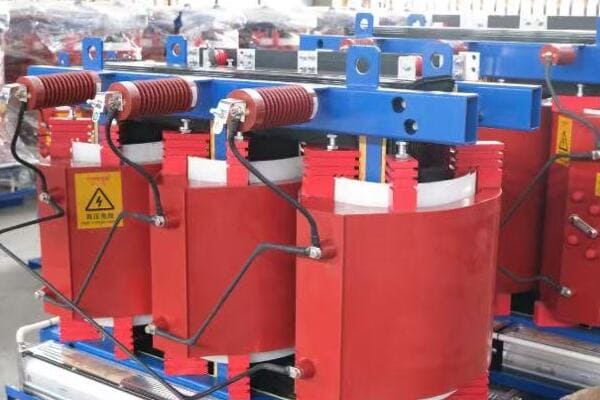
Understanding Export Challenges
Let’s break down the main barriers and risks:
- Certification and Standards Mismatches
- Import Tariffs and Bureaucracy
- Logistics and Infrastructure Constraints
- Regulatory Instability
- After-Sales Service Challenges
Certification and Standards Mismatches
A major hurdle for many exporters:
- Discrepancies between IEC standards and local grid requirements
- Need for multiple certifications across different countries
- Costly and time-consuming approval processes
I recently assisted a European manufacturer in navigating the complex certification process for the Saudi market, where local standards diverged significantly from their IEC-certified designs.
Import Tariffs and Bureaucracy
Complex and often changing import regulations:
- High import duties in some African countries
- Lengthy customs clearance processes
- Frequent changes in import policies and procedures
During a project in Nigeria, we faced unexpected delays due to last-minute changes in import documentation requirements, highlighting the need for constant vigilance in this area.
Logistics and Infrastructure Constraints
Challenges in product delivery and installation:
- Poor road infrastructure in many Sub-Saharan countries
- Limited port facilities causing delays and increased costs
- Difficulties in transporting large transformers to remote areas
Here’s a quick overview of logistical challenges:
| Region | Key Logistical Challenge | Impact on Exporters |
|---|---|---|
| North Africa | Port congestion | Increased lead times |
| West Africa | Poor road infrastructure | Higher transportation costs |
| Gulf Countries | Strict documentation requirements | Potential customs delays |
Regulatory Instability
Frequent changes in local regulations:
- Shifting local content requirements
- Evolving environmental standards
- Changes in tender processes and evaluation criteria
After-Sales Service Challenges
Difficulties in providing ongoing support:
- Limited local technical expertise in some countries
- Challenges in spare parts availability and quick response
- High costs associated with maintaining service networks
Key points about export barriers and risks:
- Certification mismatches can significantly delay market entry
- Import processes are often complex and subject to change
- Logistical challenges can increase costs and lead times
- Regulatory instability creates uncertainty for long-term planning
- After-sales service provision is crucial but challenging in many areas
In my experience, successful exporters are those who thoroughly research and prepare for these challenges. I recall a case where a Chinese manufacturer struggled in the Kenyan market due to underestimating the importance of local after-sales support, despite having competitive pricing.
For example, during a recent large-scale transformer supply project in Morocco, we had to navigate a complex web of local content requirements, stringent environmental regulations, and specific grid code certifications. The companies that succeeded were those that had invested in understanding these nuances and had built strong local partnerships to address them effectively.
As we move on to discuss the top transformer exporting countries to the region, keep these barriers and risks in mind. They play a significant role in shaping which countries and companies are most successful in penetrating and maintaining a presence in the Middle East and Africa transformer markets.
Top Transformer Exporting Countries to the Region?
Are you curious about which countries are leading the transformer export market in the Middle East and Africa? Understanding the competitive landscape is crucial for both manufacturers and buyers in this dynamic market. But which nations are dominating transformer exports to the region, and what factors contribute to their success?
China and India are the top transformer exporting countries to the Middle East and Africa, with China leading in volume and India competing on quality and cost-effectiveness. European countries, particularly Germany and Italy, maintain a strong presence in high-end and specialized transformers. Turkey and the UAE are emerging as significant re-export hubs, leveraging their strategic locations. South Korea and Japan are also notable players, especially in technologically advanced transformer segments.
Analyzing Top Exporting Countries
Let’s explore the main players and their strengths:
- China’s Dominance
- India’s Competitive Edge
- European Expertise
- Turkey and UAE as Re-export Hubs
- Other Notable Players
China’s Dominance
Leading in export volume:
- Competitive pricing and large production capacity
- Strong presence in Africa due to infrastructure investments
- Improving quality and after-sales support
I recently observed a large-scale electrification project in Ethiopia where Chinese transformers accounted for over 70% of the units, showcasing their market penetration.
India’s Competitive Edge
Growing market share:
- Balance of quality and cost-effectiveness
- Strong engineering expertise and customization capabilities
- Cultural and historical ties with many African countries
During a recent tender in Kenya, I noticed Indian manufacturers successfully competing against Chinese firms by offering better after-sales support and more flexible designs.
European Expertise
Strong in specialized and high-end segments:
- German and Italian firms leading in technology and efficiency
- Preferred for critical infrastructure and high-reliability applications
- Strong brand reputation, especially in MENA countries
Here’s a quick comparison of top exporting regions:
| Region | Key Strength | Primary Market Segment |
|---|---|---|
| China | Cost-effectiveness, Volume | Mass market, Infrastructure projects |
| India | Quality-cost balance | Mid-range, Customized solutions |
| Europe | High-end technology | Critical infrastructure, Specialized needs |
| Turkey/UAE | Strategic location, Re-export | Regional distribution, Quick delivery |
Turkey and UAE as Re-export Hubs
Emerging significance in regional distribution:
- Strategic geographical location for serving MENA and Africa
- Growing local assembly and customization capabilities
- Faster delivery times compared to Asian manufacturers
Other Notable Players
Significant contributions from:
- South Korea: Known for technological innovation
- Japan: High-quality, reliable transformers for specific sectors
- Brazil: Growing presence, especially in Portuguese-speaking African countries
Key points about top exporting countries:
- China leads in volume, particularly in Africa
- India competes with a balance of quality and cost
- European countries dominate in high-end and specialized segments
- Turkey and UAE are becoming important regional hubs
- South Korea and Japan are notable in tech-advanced segments
In my experience, the success of these exporting countries often depends on their ability to adapt to local needs and overcome regional challenges. I recall a project in Saudi Arabia where a South Korean manufacturer won a significant contract by offering advanced smart grid features that Chinese competitors couldn’t match at the time.
For instance, in a recent large-scale grid modernization project in Egypt, we saw a interesting mix of suppliers: Chinese firms provided the bulk of standard distribution transformers, Indian companies supplied customized units for specific industrial applications, and German technology was chosen for critical high-voltage substations. This diversity highlights the nuanced nature of the market and the different strengths each exporting country brings.
As we move on to discuss brand spotlights and competitive positioning, keep in mind how these national strengths and export trends influence individual company strategies in the Middle East and Africa transformer market.
Brand Spotlight: Competitive Positioning in MEA?
Are you wondering which transformer brands are leading the pack in the Middle East and Africa? Understanding the competitive landscape is crucial for both buyers and industry players. But how do different brands position themselves in this diverse and challenging market, and what strategies set the successful ones apart?
In the MEA transformer market, ABB maintains a strong presence in Egypt and Saudi Arabia, particularly in utility contracts. TBEA and CHBEB from China are making significant inroads in Africa’s rural electrification projects. Siemens and Schneider Electric are competing intensely in smart grid initiatives across North Africa. Local brands are also emerging, often partnering with global players. Success in this market depends on a combination of technological expertise, price competitiveness, and strong local partnerships.
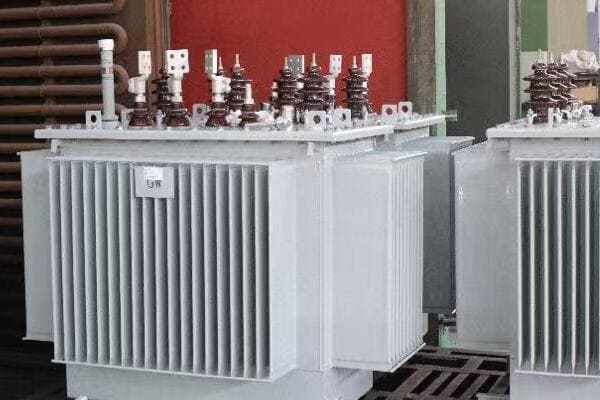
Analyzing Brand Positioning in MEA
Let’s examine the strategies of key players:
- ABB’s Market Leadership
- Chinese Brands: TBEA and CHBEB
- Siemens vs Schneider Electric
- Emerging Local Brands
- Niche Players and Specialists
ABB’s Market Leadership
Strong presence in key markets:
- Dominant in Egypt and Saudi Arabia utility sectors
- Focus on high-efficiency and smart transformer solutions
- Leveraging long-standing relationships with major utilities
I recently observed ABB’s strong position in a major grid upgrade project in Riyadh, where their smart transformer technology was a key differentiator.
Chinese Brands: TBEA and CHBEB
Gaining ground in African markets:
- TBEA leading in large-scale rural electrification projects
- CHBEB offering cost-effective solutions for urban distribution
- Both leveraging Chinese government’s infrastructure investments in Africa
During a recent rural electrification tender in Tanzania, I noticed TBEA’s competitive edge in offering comprehensive solutions that included both transformers and associated infrastructure.
Siemens vs Schneider Electric
Competing in smart grid initiatives:
- Siemens focusing on integrated smart city solutions
- Schneider Electric strong in industrial and commercial sectors
- Both pushing IoT and digital transformation in power distribution
Here’s a quick comparison of these major brands:
| Brand | Key Strength | Primary Market Focus |
|---|---|---|
| ABB | High-end technology, Utility relationships | Large-scale utility projects |
| TBEA | Cost-effective, Rural solutions | African electrification projects |
| CHBEB | Urban distribution, Competitive pricing | Rapidly growing cities |
| Siemens | Smart city integration | Government-led modernization |
| Schneider | Industrial automation integration | Commercial and industrial sectors |
Emerging Local Brands
Growing importance of regional players:
- Egyptian and Turkish brands gaining traction in their respective regions
- UAE-based manufacturers expanding across MENA
- Often partnering with global brands for technology transfer
Niche Players and Specialists
Carving out specific market segments:
- Specialized manufacturers focusing on sectors like oil & gas or renewables
- European brands maintaining edge in high-reliability applications
- Japanese firms known for advanced technology in specific applications
Key points about brand positioning:
- ABB leads in high-end utility projects across MENA
- Chinese brands are rapidly expanding, especially in Africa
- Siemens and Schneider compete in smart grid and automation
- Local brands are emerging, often through partnerships
- Niche players succeed by specializing in specific sectors or technologies
In my experience, successful brands in the MEA market are those that can adapt their global strategies to local needs. I recall a project in Morocco where Schneider Electric won a significant contract by offering a tailored solution that combined their global smart grid expertise with strong local partnerships for implementation and support.
For example, in a recent large-scale solar farm project in the UAE, we saw an interesting mix of brand selections: ABB provided the main step-up transformers due to their high-efficiency ratings, TBEA supplied the distribution transformers at a competitive price point, and a local UAE brand partnered with Siemens for the smart monitoring systems. This diverse selection highlights how different brands can coexist in the market by focusing on their unique strengths.
As we move on to our recommendations for exporters, keep in mind how these brand strategies and market positions influence the overall competitive landscape in the Middle East and Africa transformer market.
Recommendations for Exporters?
Are you an exporter looking to succeed in the Middle East and Africa transformer market? Navigating this complex and diverse region can be challenging, but with the right approach, it offers significant opportunities. But what specific strategies should you adopt to effectively penetrate and thrive in these markets?
For successful export to MEA transformer markets, build strong partnerships with local EPCs and distributors. Customize products for harsh desert and humid conditions. Secure both IEC and local authority approvals in advance. Offer comprehensive after-sales support and training. Develop flexible financing options, especially for African projects. Stay informed about changing regulations and tender processes. Emphasize energy efficiency and smart features to align with regional modernization goals.
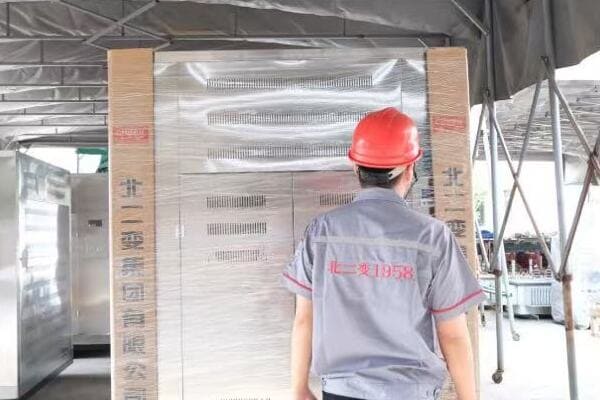
Key Strategies for Exporters
Let’s break down the essential recommendations:
- Building Local Partnerships
- Product Customization for Regional Conditions
- Navigating Certifications and Approvals
- After-Sales Support and Training
- Flexible Financing and Pricing Strategies
Building Local Partnerships
Critical for market entry and growth:
- Collaborate with local EPCs (Engineering, Procurement, and Construction firms)
- Establish relationships with regional distributors
- Consider joint ventures for local manufacturing or assembly
I recently advised a European manufacturer who successfully entered the Saudi market by partnering with a local EPC, gaining crucial insights into tender processes and customer preferences.
Product Customization for Regional Conditions
Adapting to challenging environments:
- Design for extreme heat in desert regions
- Develop solutions for high humidity in coastal areas
- Offer dust-resistant features for harsh environments
During a project in Oman, I saw how a manufacturer’s specially designed transformers for high-temperature operations gave them a significant edge over competitors.
Navigating Certifications and Approvals
Proactive approach to compliance:
- Secure IEC certifications as a baseline
- Obtain local authority approvals well in advance
- Stay informed about changing standards and requirements
Here’s a quick guide to key certifications:
| Region | Essential Certifications | Additional Considerations |
|---|---|---|
| Gulf Countries | IEC, GCC Standardization Organization (GSO) | Country-specific approvals |
| North Africa | IEC, Country-specific standards | EU standards often recognized |
| Sub-Saharan Africa | IEC, Regional Economic Community standards | World Bank project requirements |
After-Sales Support and Training
Crucial for long-term success:
- Establish local service centers or partner with local service providers
- Offer comprehensive training programs for end-users and technicians
- Provide easily accessible spare parts and technical support
Flexible Financing and Pricing Strategies
Adapting to diverse market needs:
- Develop flexible payment terms, especially for African projects
- Consider partnerships with international development banks
- Offer competitive pricing without compromising on quality
Key recommendations for exporters:
- Establish strong local partnerships for market insights and support
- Customize products to withstand regional environmental challenges
- Proactively secure necessary certifications and approvals
- Provide robust after-sales support and training programs
- Develop flexible financing options to accommodate diverse market needs
In my experience, exporters who take a holistic approach to these recommendations are more likely to succeed in the MEA market. I recall a case where a Chinese manufacturer struggled initially in Kenya due to inadequate after-sales support, but after establishing a local service center and training program, they saw a significant increase in both sales and customer satisfaction.
For instance, in a recent large-scale electrification project in rural Nigeria, the winning bid came from a manufacturer who not only offered competitive pricing but also provided a comprehensive package including customized transformers for the local climate, flexible financing options, and a robust training program for local technicians. This approach addressed the client’s immediate needs and long-term sustainability concerns.
Remember, success in the MEA transformer market requires more than just a quality product. It demands a deep understanding of local conditions, strong partnerships, and a commitment to long-term presence in the region. By following these recommendations and staying adaptable to the evolving market dynamics, exporters can position themselves for sustainable success in this challenging but rewarding market.
Conclusion
The 2025 Middle East & Africa transformer market offers significant opportunities driven by urbanization, renewable energy integration, and grid modernization. Success requires understanding regional drivers, adapting to procurement trends, navigating export barriers, and developing strong local partnerships. Exporters should focus on product customization, comprehensive support, and flexible strategies to thrive in this diverse and growing market.
Remember, at chbeb-ele, we’re not just sharing information – we’re empowering you to be part of the solution in creating a secure, clean, and efficient energy future across global markets. Let’s continue this journey together.
Recent Post
Quick Message
Request A free quote
We'd like to work with you
- +86 15558785111
- chbebgroup@chbebpower.com
- +86 15558785111
What We Do
CHINA BEI ER BIAN (CHBEB) GROUP, with 218 million in registered capital, originated from Beijing Beierbian Transformer Group. Headquartered in Beijing for R&D, it operates major production bases in Nanjing and Yueqing, producing high-quality products.
Latest Post
Latest Product
Contact Us
- +86 15558785111
- chbebgroup@chbebpower.com
- +86 15558785111
BeiJing
No 3,RongJing East Road,BeiJing Economic Technological Development Area,BeiJing,China
JiangSu
No 7️Xiangfeng Road,Jiangning,NanJing,JiangSu,China
WenZhou
No.211, Wei 16 Road, Industrial Zone, Yueqing, Wenzhou, Zhejiang, China.
XiangYang Industrial Zone ,YueQing,WenZhou,ZheJiang,China

